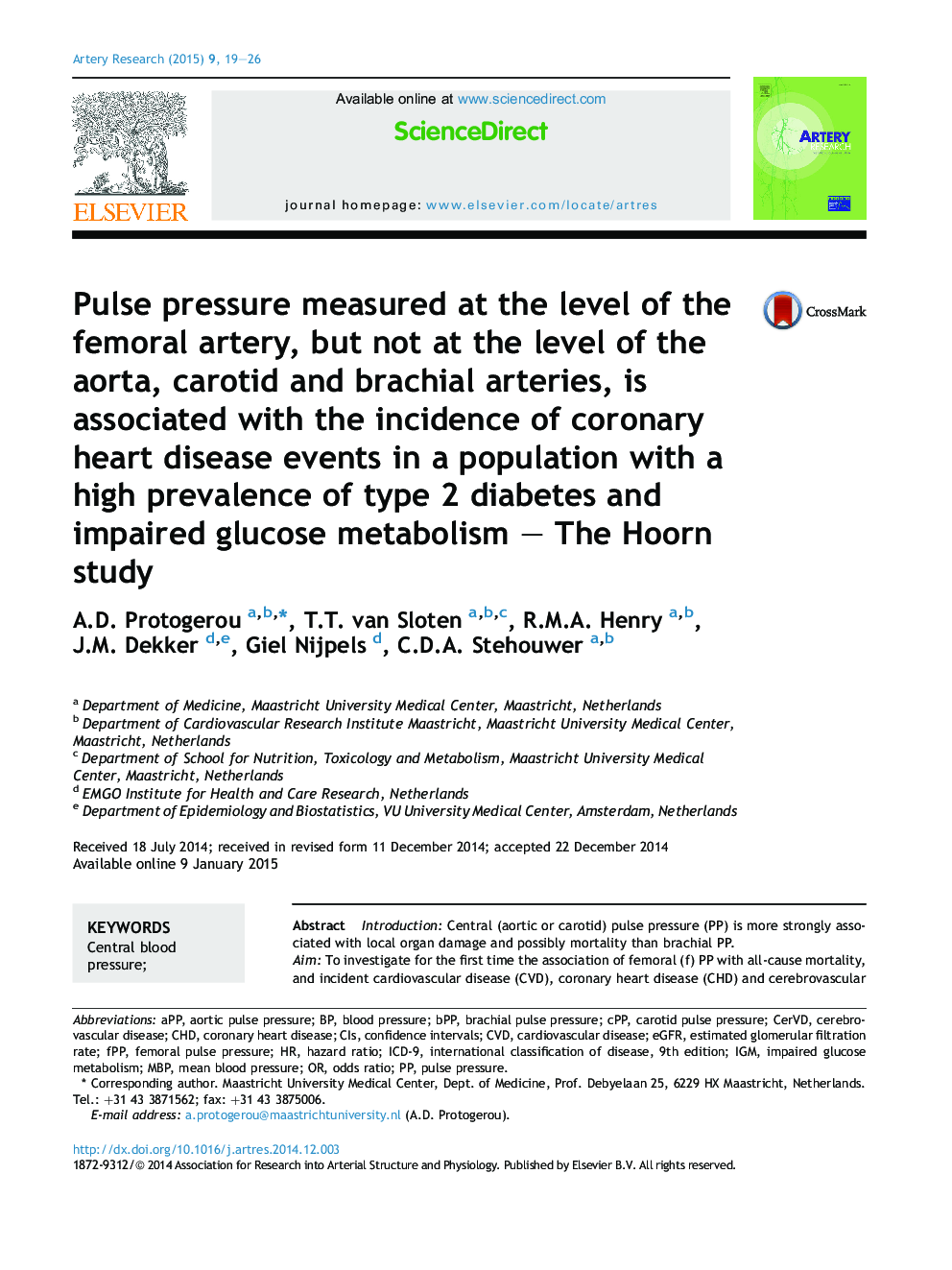| کد مقاله | کد نشریه | سال انتشار | مقاله انگلیسی | نسخه تمام متن |
|---|---|---|---|---|
| 2891706 | 1574623 | 2015 | 8 صفحه PDF | دانلود رایگان |
• Femoral pulse pressure (PP) associated with coronary heart disease (CHD) events.
• Although brachial, aortic and carotid PP did not associate with CHD events.
• Aortic and carotid PP have similar predictive value for all outcomes.
IntroductionCentral (aortic or carotid) pulse pressure (PP) is more strongly associated with local organ damage and possibly mortality than brachial PP.AimTo investigate for the first time the association of femoral (f) PP with all-cause mortality, and incident cardiovascular disease (CVD), coronary heart disease (CHD) and cerebrovascular disease (CerVD) events, as well as with markers of renal function (estimated glomerular filtration rate, eGFR, and microalbuminuria).MethodsWe used data from a population-based study, by design including 50% type 2 diabetes and impaired glucose metabolism (IGM). The baseline examination included non-invasive PP assessment at the brachial, aorta (Sphygmocor device), carotid and femoral (ultrasound distention waves calibrated by brachial mean and diastolic pressure) arteries.ResultsAfter 7.8 years of follow-up (n = 449, age: 68.9 ± 6.0 males: 52%), 66 participants had died, 102 had a CVD event, 45 a CHD event, and 31 a CerVD event. PP at all sites was associated with incident all-cause mortality and CVD events. Only fPP was, however, associated with incident CHD events, even after adjustment for CVD risk factors (HRs 1.31 [1.07–1.61 95% CIs]). No association between PP and incident CerVD events was found – possibly due to the small number of events. fPP was associated with renal function but this was similar to other PP indices. No interaction between each any local PP index and glucose metabolism status or renal function was present.ConclusionBeyond anatomical topography, local fPP provide important information related to CVD events. This possibility and the underlying mechanisms should be further investigated.
Journal: Artery Research - Volume 9, March 2015, Pages 19–26
